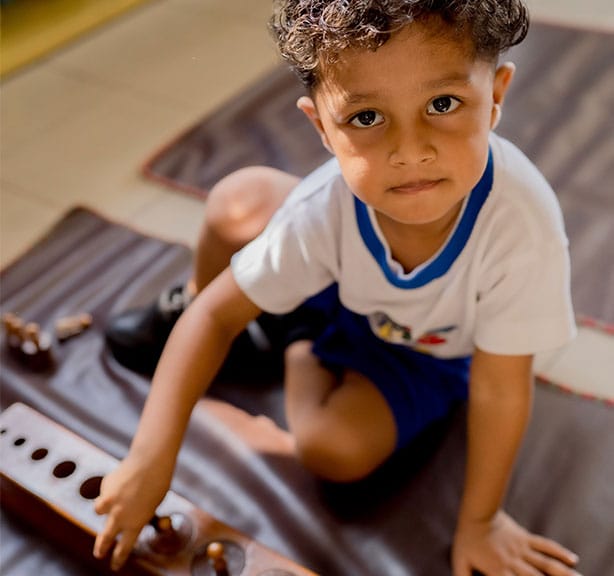Helping Children Understand the World, One Sense at a Time
In the early years of life, children experience the world through their senses. At JMS International Montessori, we recognise that true learning begins with perception, which is why Sensorial Education is a foundational part of our curriculum.
Montessori Sensorial materials are scientifically designed to isolate and refine each of the child’s eight senses—not just the traditional five. These activities help children observe, compare, classify, and appreciate the rich details of the world around them.
What Are the 8 Senses in Montessori?
- Sight (Visual) – Recognizing shapes, colors, sizes, and patterns
- Hearing (Auditory) – Discriminating between sounds, rhythms, and tones
- Smell (Olfactory) – Identifying and distinguishing scents
- Taste (Gustatory) – Tasting and classifying flavors
- Touch (Tactile) – Feeling textures, temperatures, weights, and shapes
- Balance (Vestibular) – Maintaining body balance and coordination
- Body Awareness (Proprioception) – Understanding body position and movement
- Internal Awareness (Interoception) – Feeling internal cues like hunger, thirst, or calm
Why Sensorial Education Matters
Between the ages of 2½ and 6, the child’s brain is highly sensitive to sensory input. Montessori Sensorial work takes advantage of this “absorbent mind” by offering rich, hands-on activities that develop both cognitive and physical intelligence.
These experiences help children:
- Improve concentration and attention to detail
- Organize and process sensory input
- Develop logical thinking and classification skills
- Build fine and gross motor coordination
- Lay a foundation for language and math

Sensorial Activities at JMS Montessori
Here are just a few examples of how we nurture each sense:
- Sight: Color tablets, geometric solids, knobbed cylinders
- Hearing: Sound boxes, bells, music exploration
- Touch: Fabric boxes, thermic tablets, mystery bags
- Smell: Scent jars with herbs, spices, and fruits
- Taste: Tasting trays with sweet, salty, sour, and bitter
- Balance: Walking the line, movement games, obstacle paths
- Proprioception: Carrying trays, climbing frames, weighted objects
- Interoception (gently supported): Breathing activities, mindfulness moments, calm corners
The Montessori Difference
What makes Sensorial Education in Montessori so unique is its purposeful structure. Each material isolates one specific quality (like sound or weight), allowing the child to focus, repeat, and master it at their own pace.
We don’t rush learning. We invite discovery. At JMS, children are encouraged to explore and refine their senses in an environment that is calm, respectful, and filled with wonder.
In Every Sense, A Path to Understanding
Sensorial Education at JMS nurtures the whole child—mind, body, and soul- by engaging all eight senses. These early experiences do more than develop skills—they help children become thoughtful observers, creative thinkers, and joyful learners for life.




